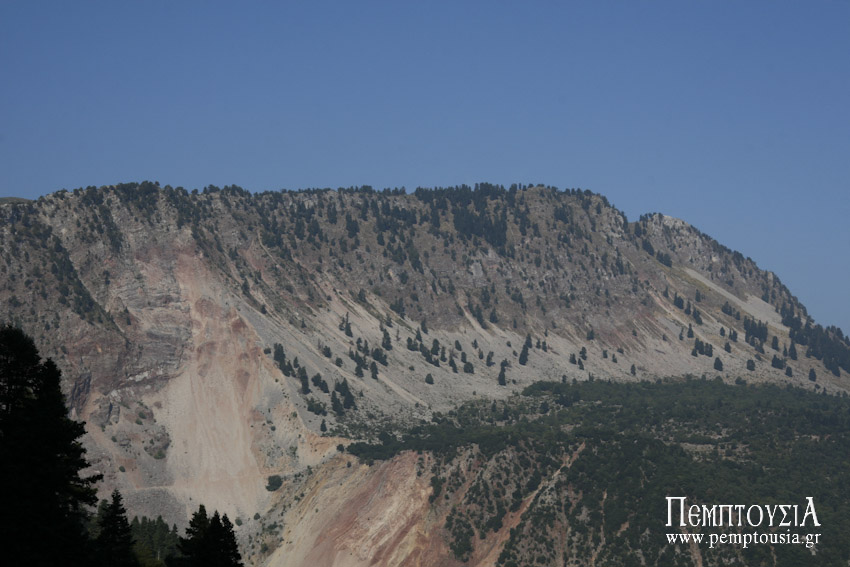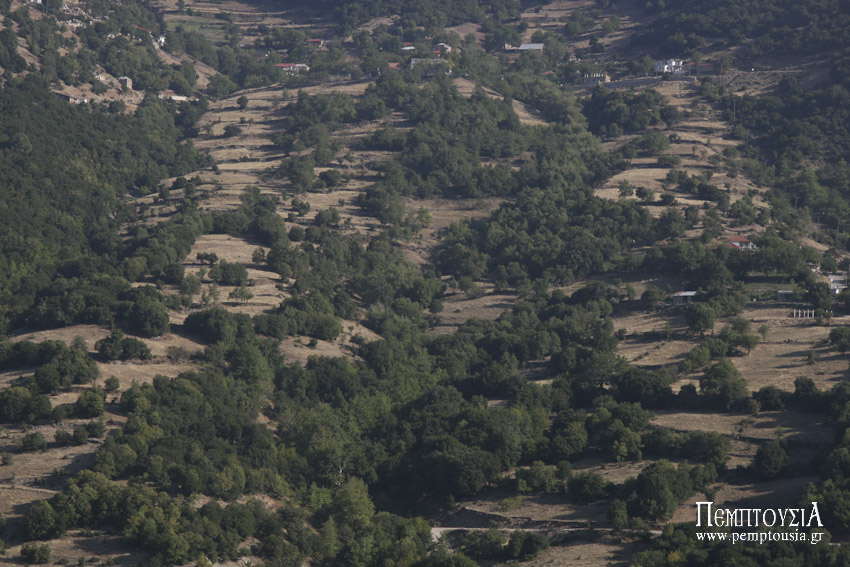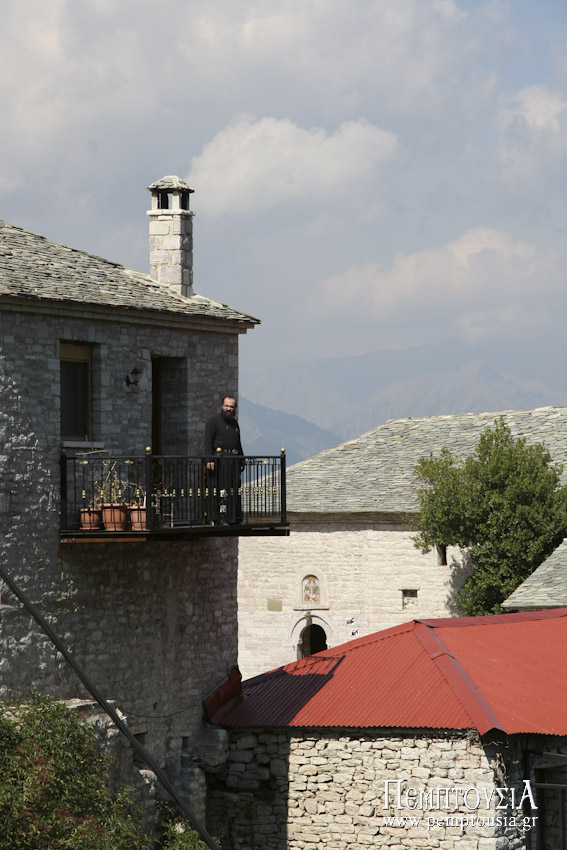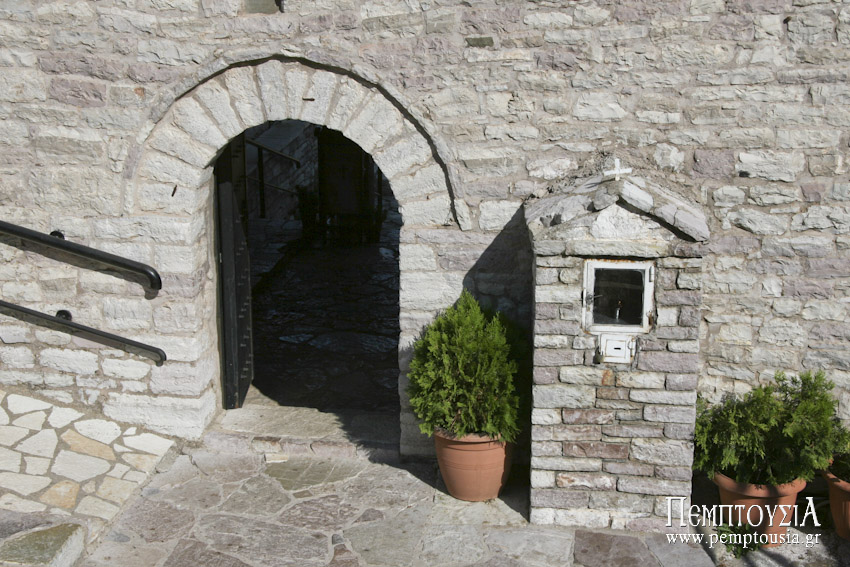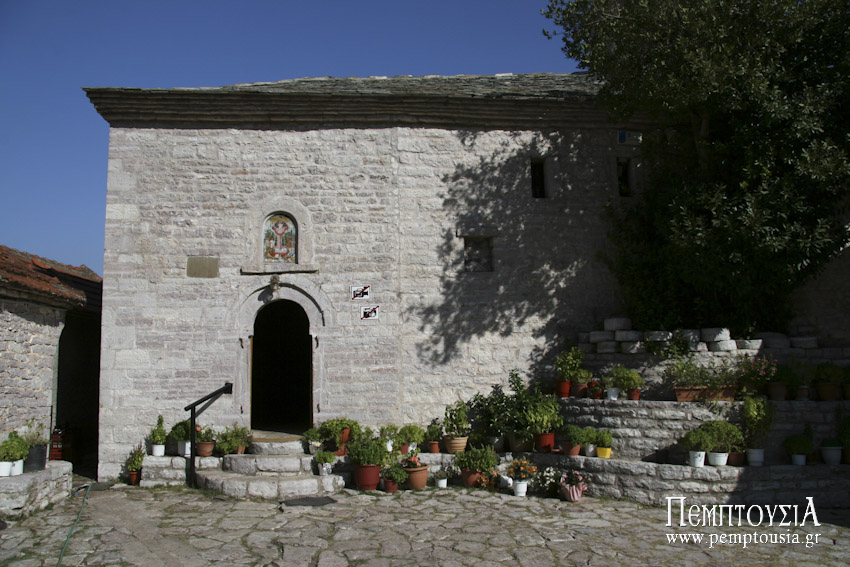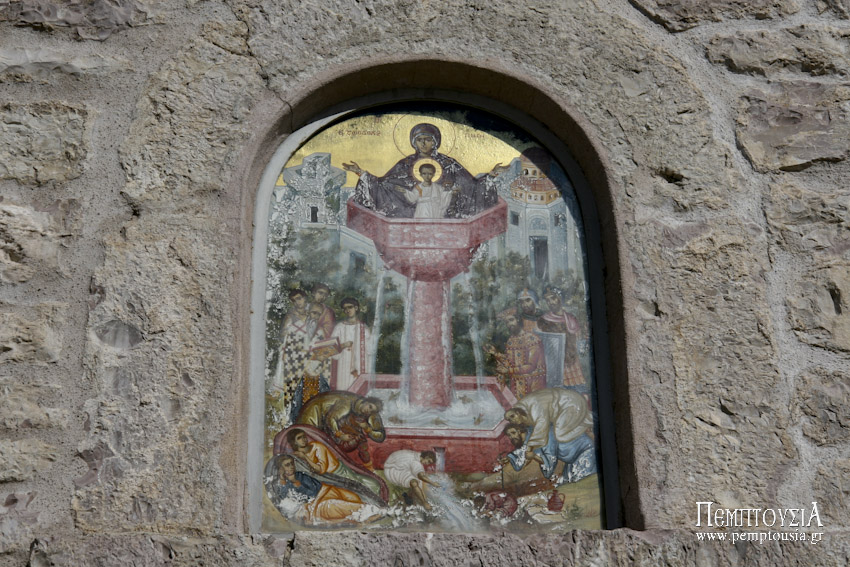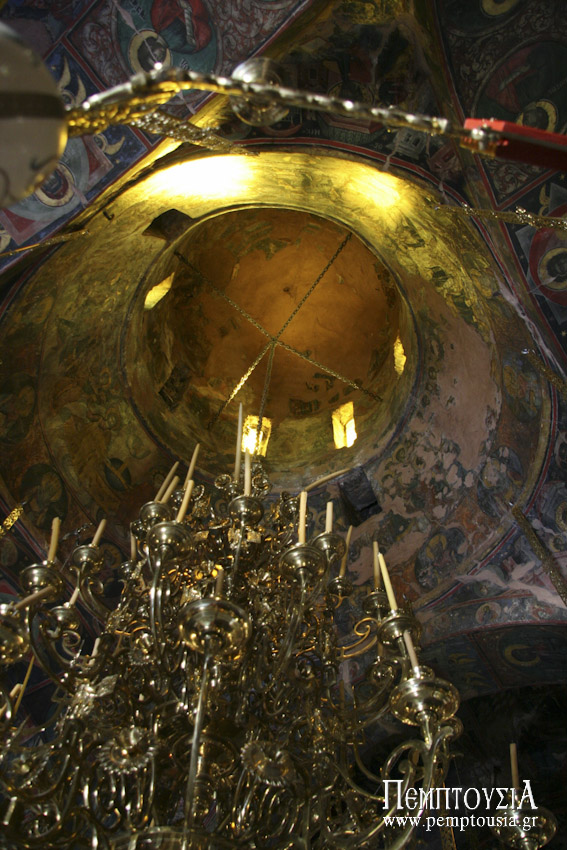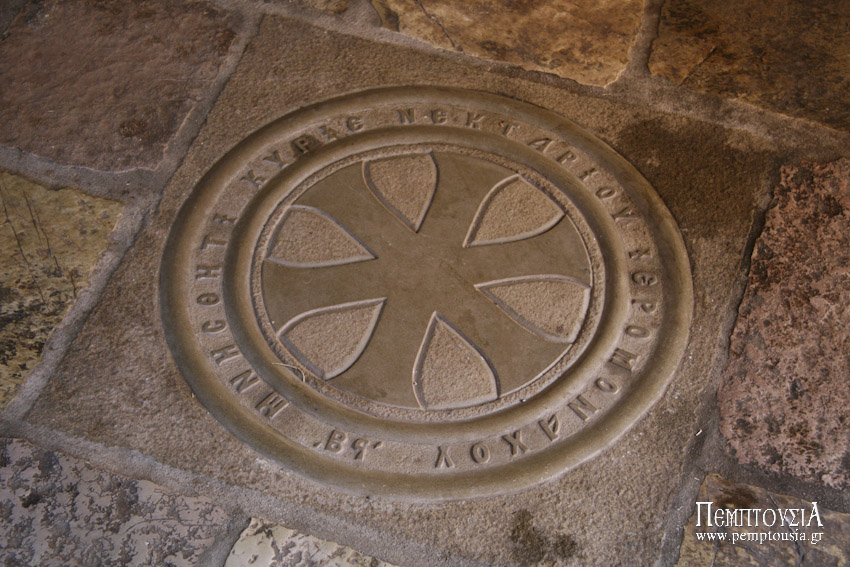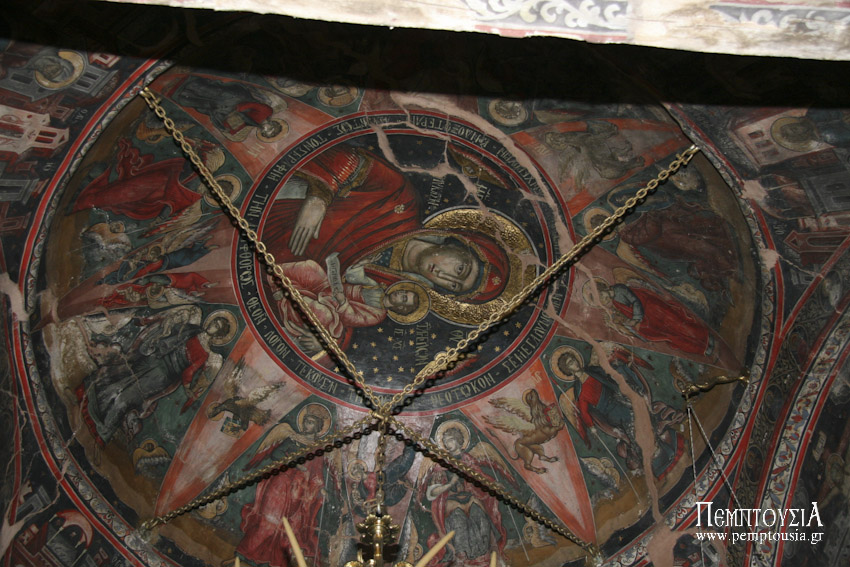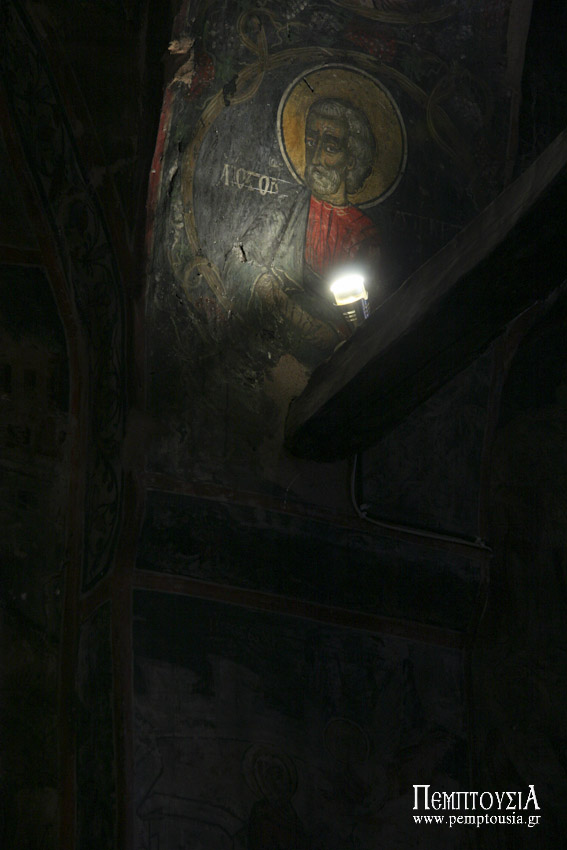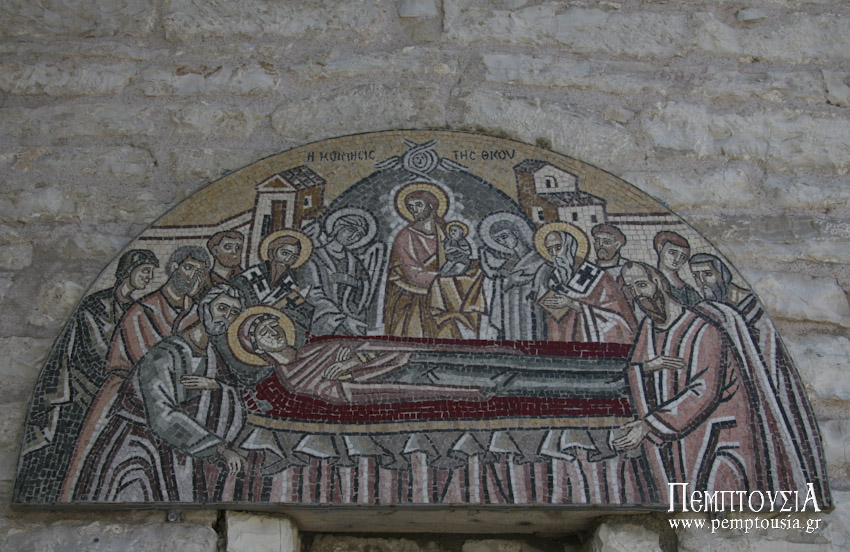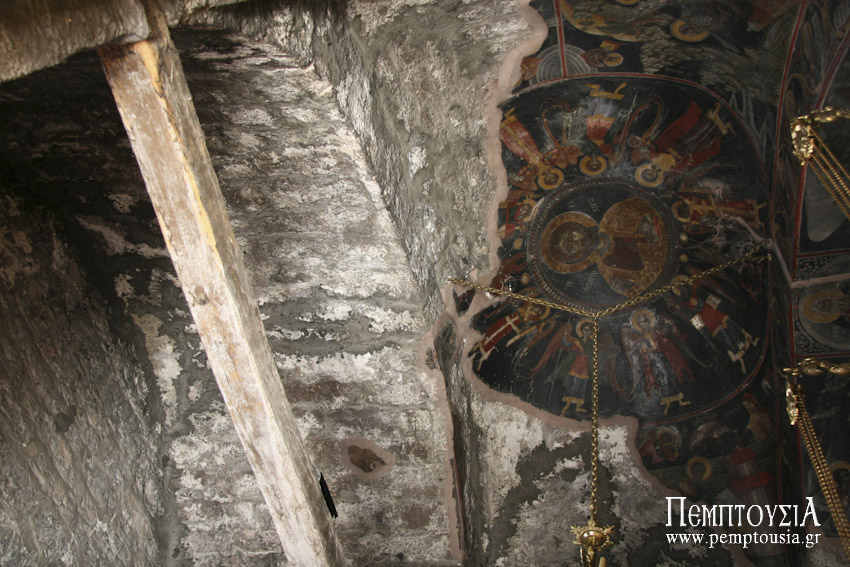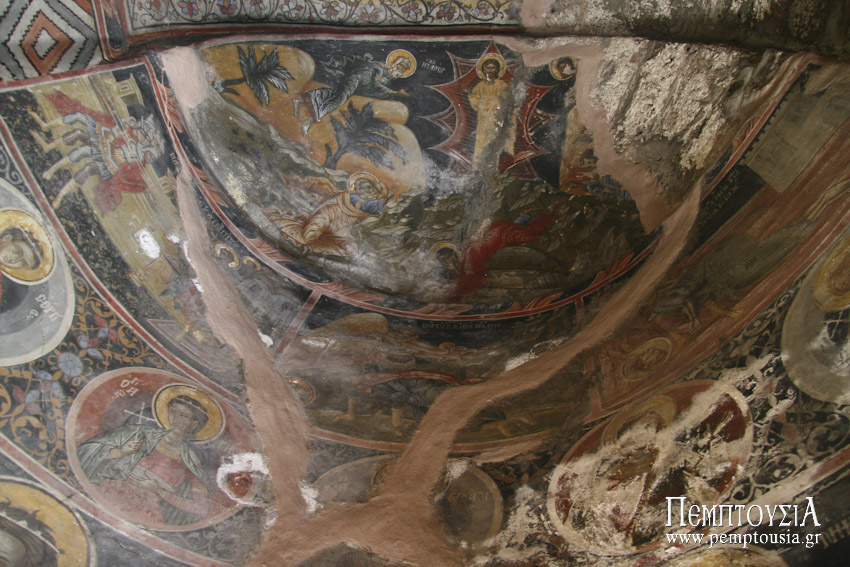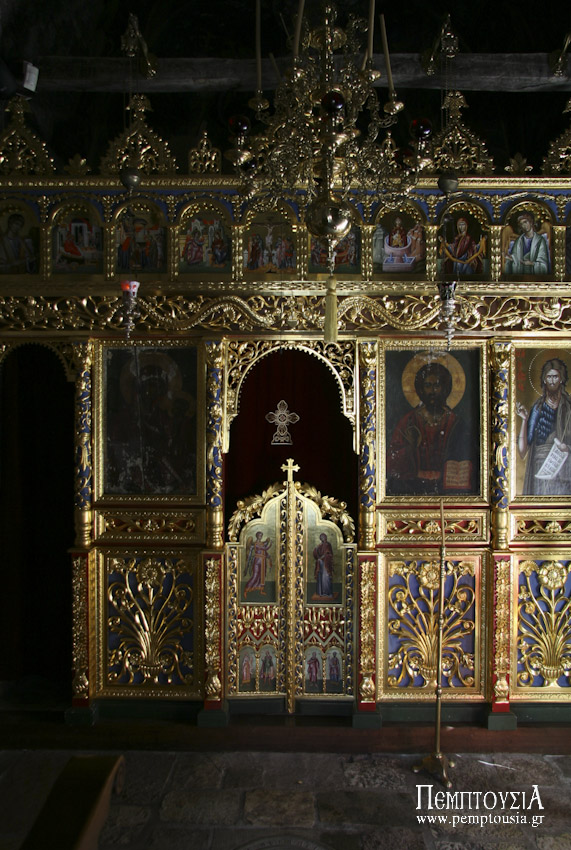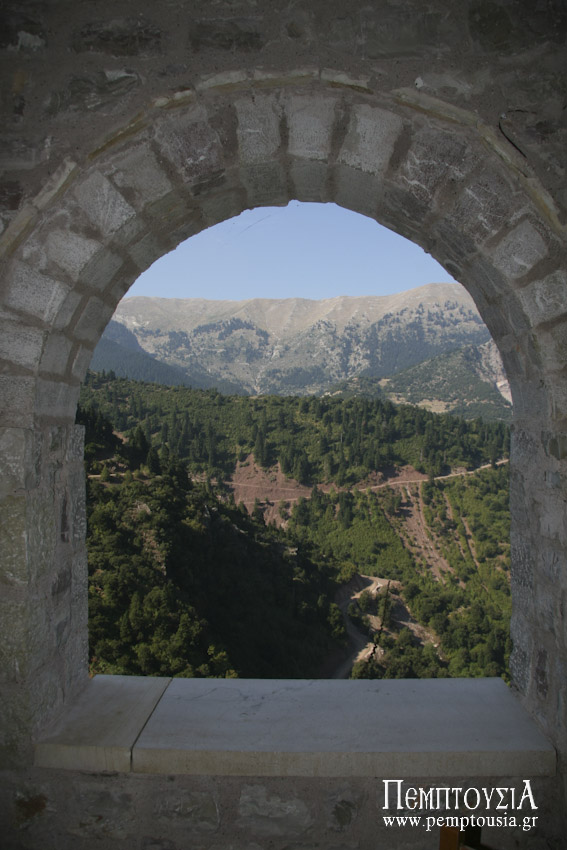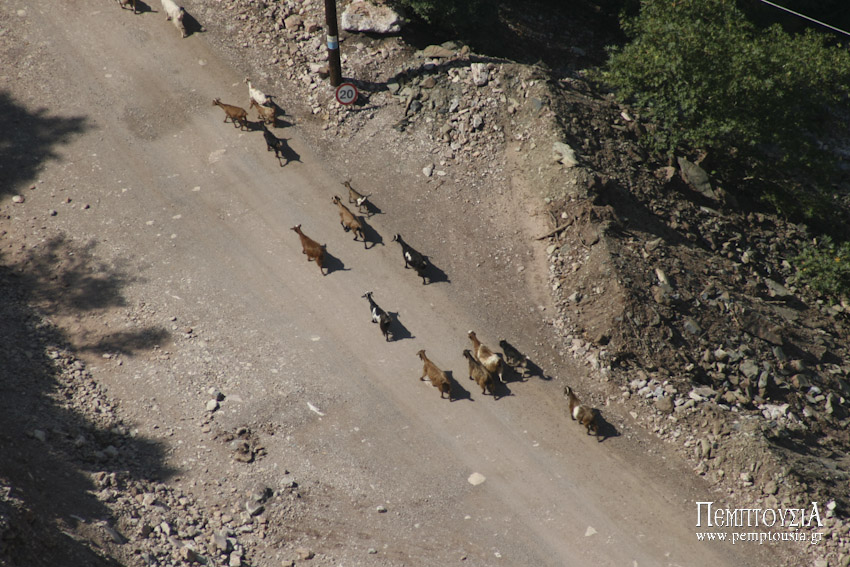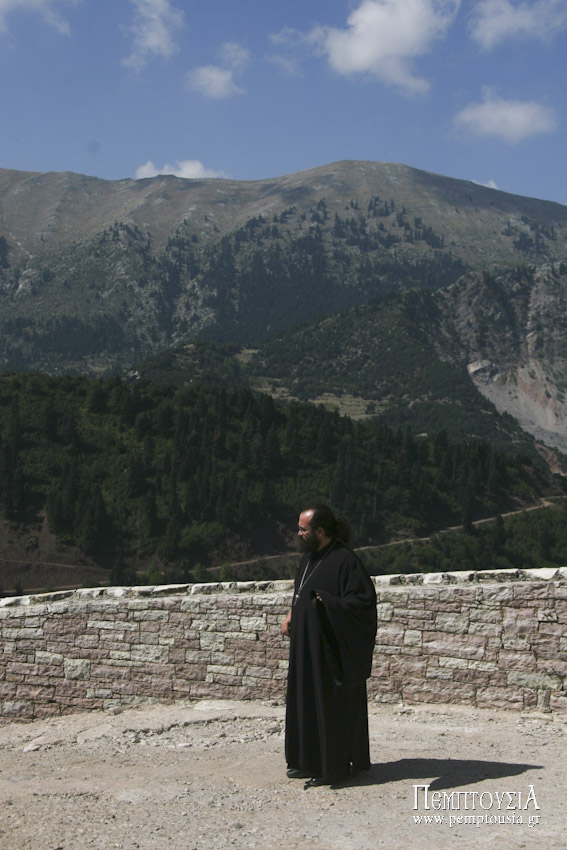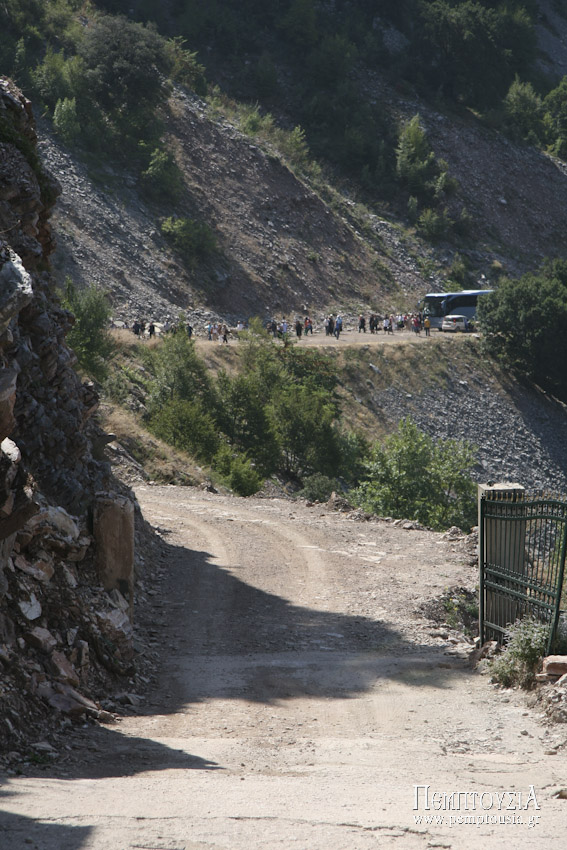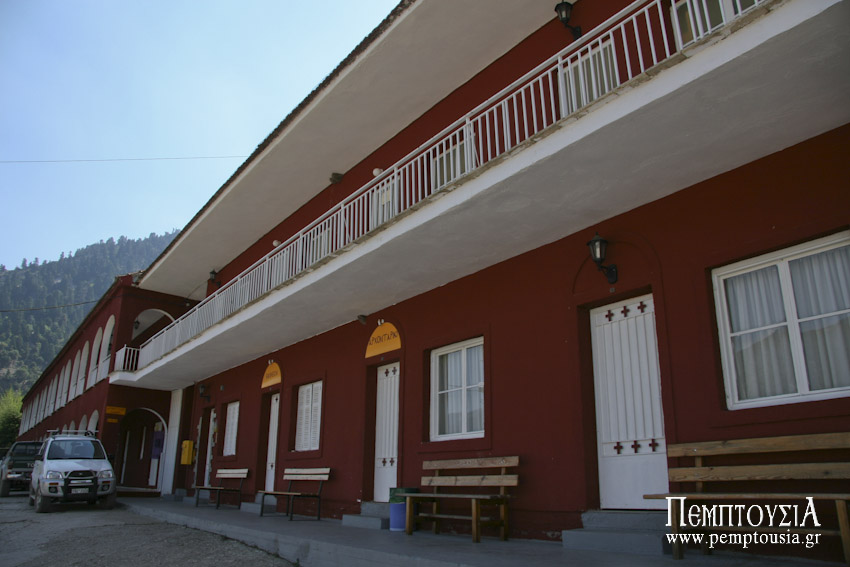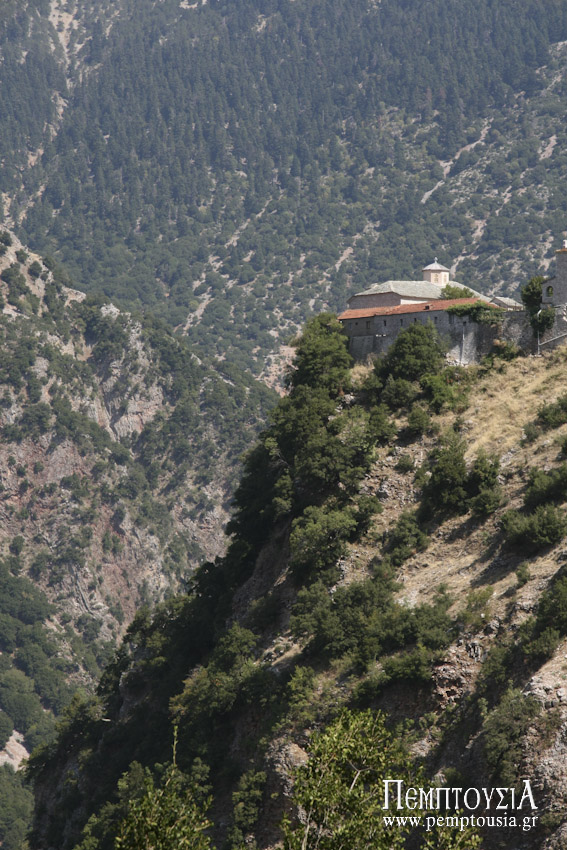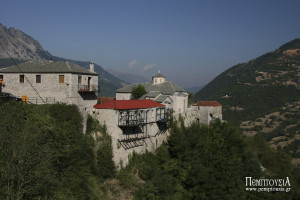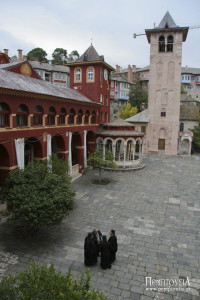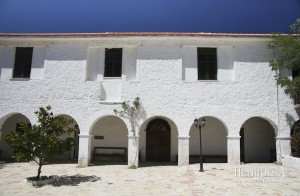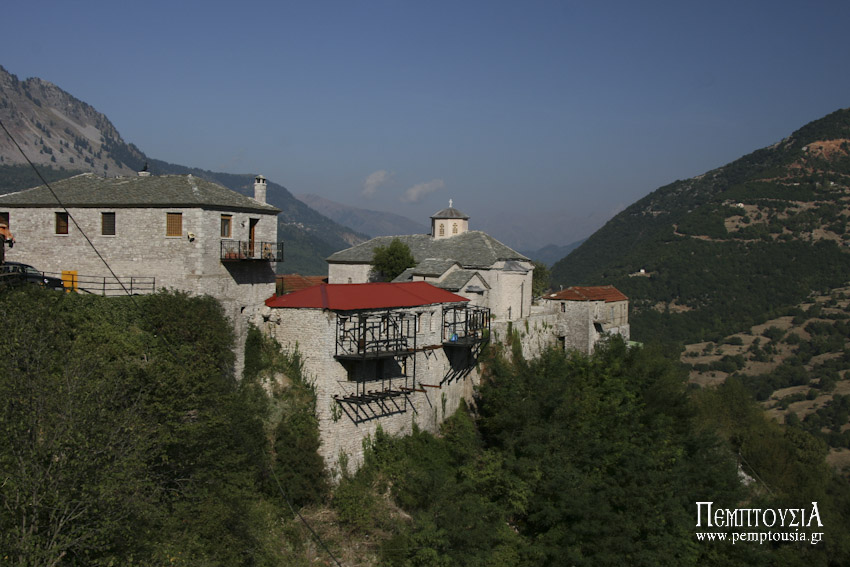
On an inaccessible site in the beautiful mountains of Agrafa in the Pindus range (in Central Greece), near the village of Koumbouriana, in the municipality of Eastern Argithea, we see the Holy Monastery of Our Lady the Cave-Dweller, dedicated to the Life-Receiving Spring. The monastery, which is under the jurisdiction of the Holy Metropolis of Thessaliotida and Fanariofersalon, is built on an outcrop of rock, 1000 metres above sea-level. It was founded by two brothers, Athanasios and Parthenios, who came from the village of Stefaniada. The reason for the foundation of the monastery was the discovery of an icon of the Mother of God the Guide (photographs: Nikos Loupakis).
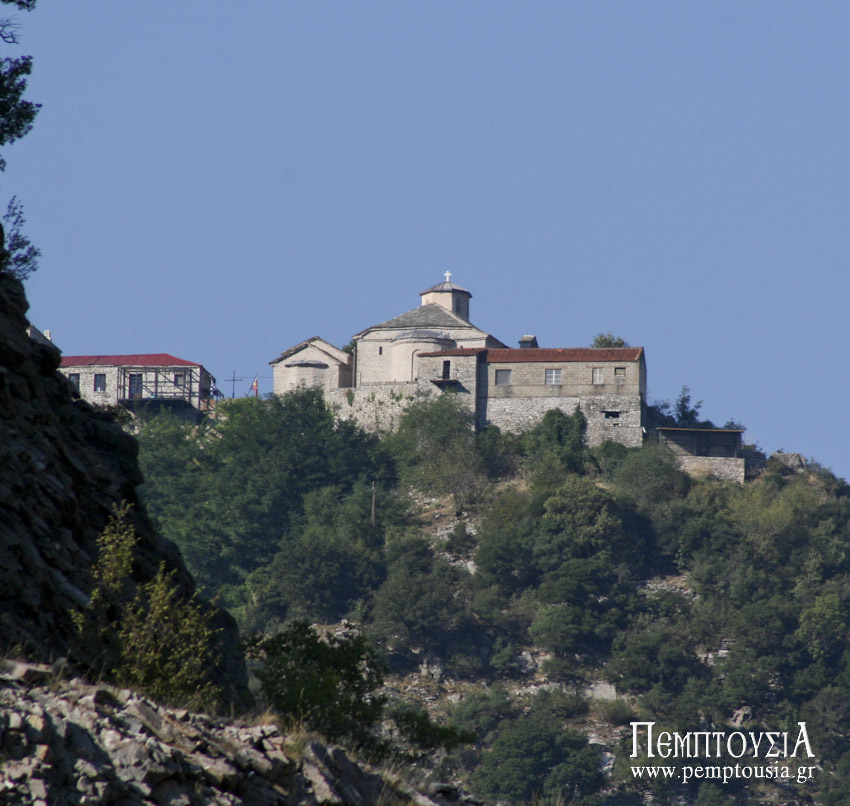
The Monastery is built on an outcrop of rock, below which is the cave where the wonder-working icon of Our Lady was found and to which it owes its name.
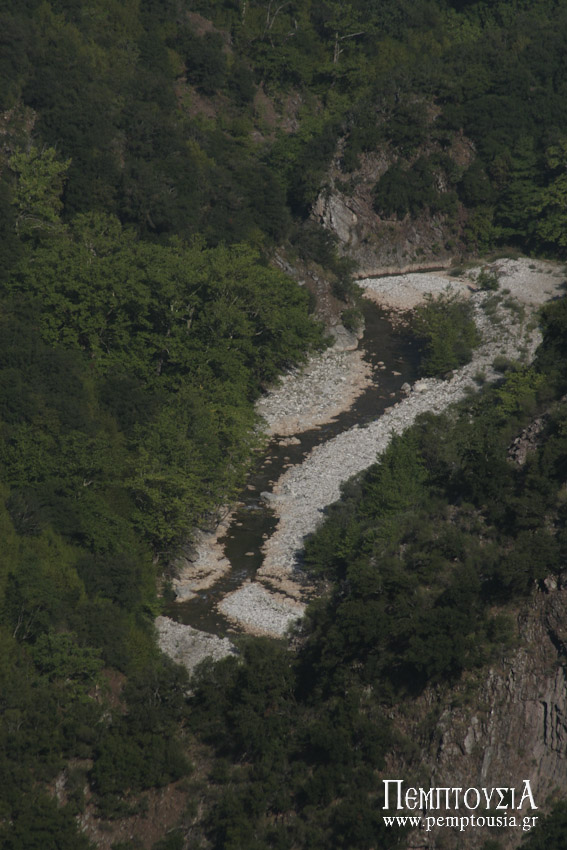
The view over the cliff is awesome. Far below is a tributary of the River Akheloös, while to the east of the Monastery are sheer and inaccessible rocks
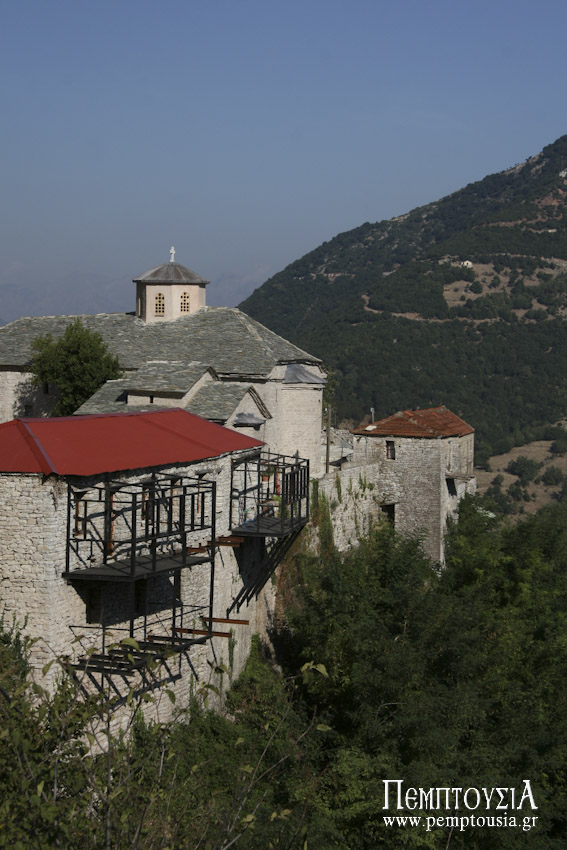
The Monastery of the Cave made an important contribution to the Greek Revolution (1821). Yeoryios Karaïskakis often organized military councils and rendezvous there, because of its location. Moreover, during the revolution in Agrafa, which was instigated by the Greek government to achieve the liberation of Thessaly, it was a military headquarters. In 1837, the Revolutionary government under Alexandris moved there, and defensive positions still survive above the Monastery.
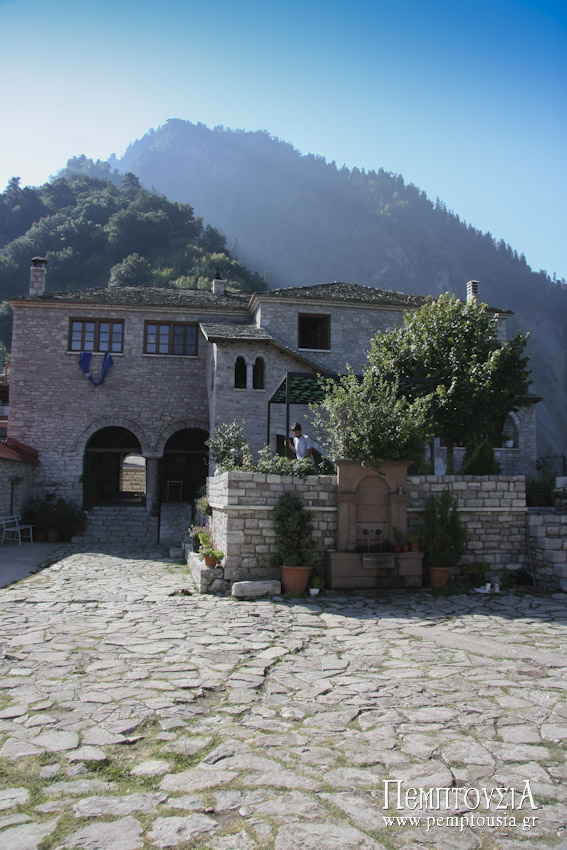
The interior of the Monastery reveals the extent of the restoration which has taken place in recent years, thanks to the assistance of pilgrims.
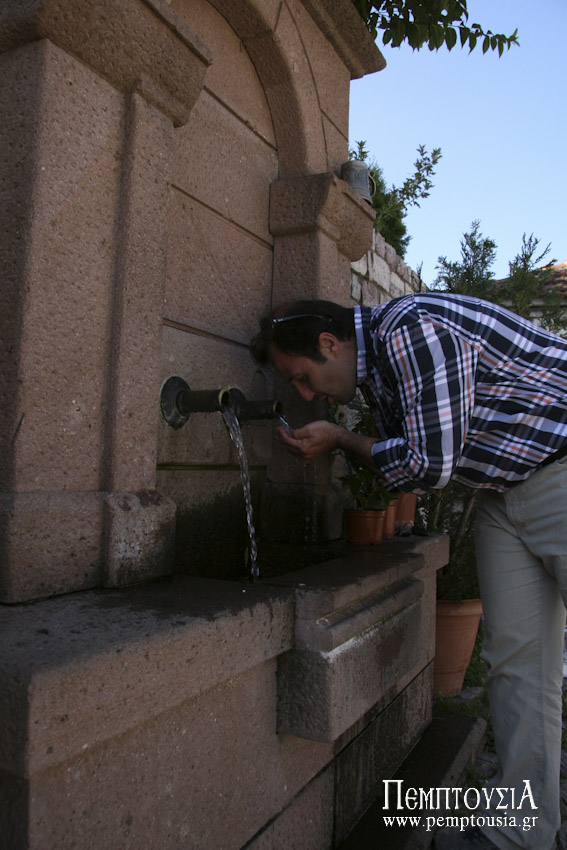
Visitors to the Monastery, like “panting harts” are quick to drink from the water which gushed forth where Our Lady miraculously indicated
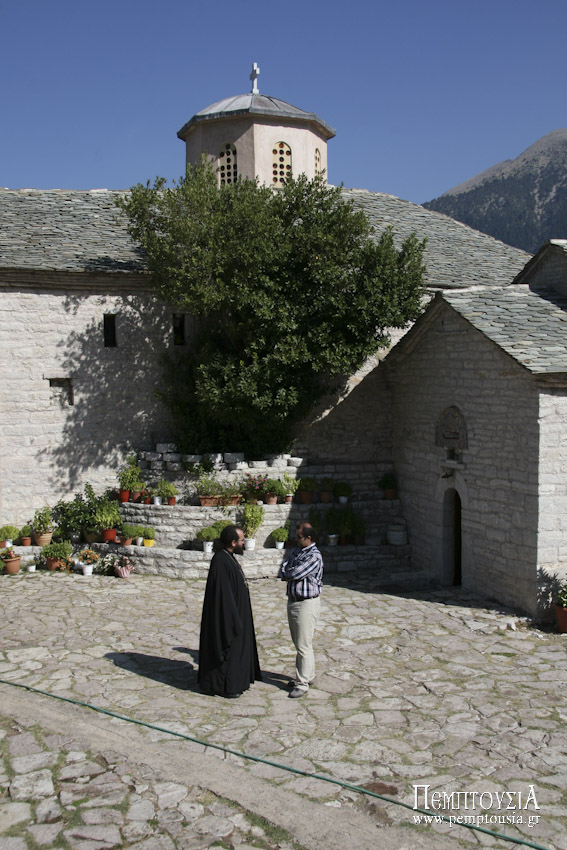
The Monastery is surrounded by a defensive wall. Within this is the Katholiko (Main Church), the Church of the Life-Receiving Spring, in Byzantine style, as well as a small chapel dedicated to the Dormition of the Mother of God. On an inscription outside the church, we read: “The divine and holy church of the Life-Receiving Spring was rebuilt in 1736, in the month of April, the expenses being borne by Hieromonk Parthenios, Papa-Ionas, Papa- Gavriil and Papa- Ananias”. The construction of the chapel dates to the 16th century, while the wall-paintings are from the 17th century.
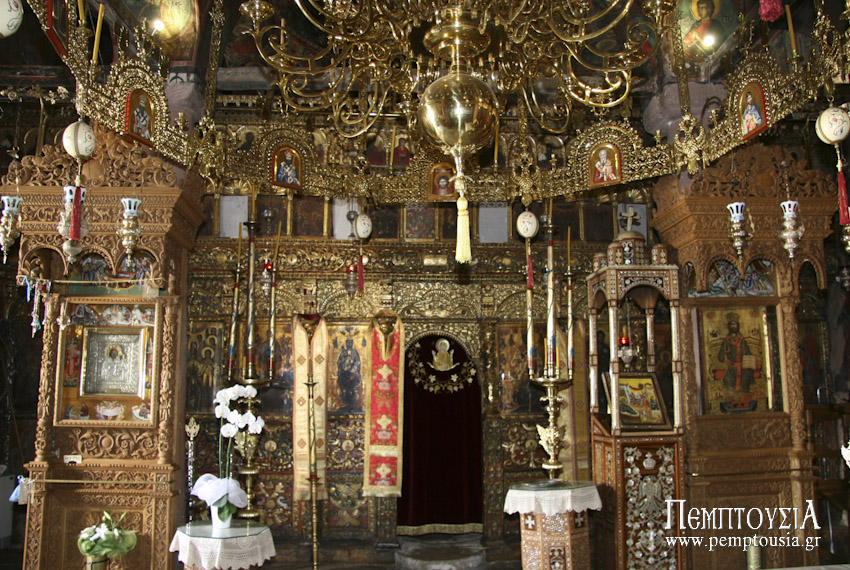
The carved wooden iconostas is high and interesting, with three rows of icons. It was completed in 1779, according to a surviving inscription, the expenses being borne by Abbot Gavriil and the other monks and the work being carried out by the craftsmen Yeoryios and Ioannis. Most of its icons date to 1736 and some are of exceptional interest, such as that of the Mother of God, which, it appears, was painted by the hand of “Theodoros the least”, from the town of Ayia and the icon of Christ, which also mentions “Theodore the least”, from the town of Bucharest in Greater Wallachia.
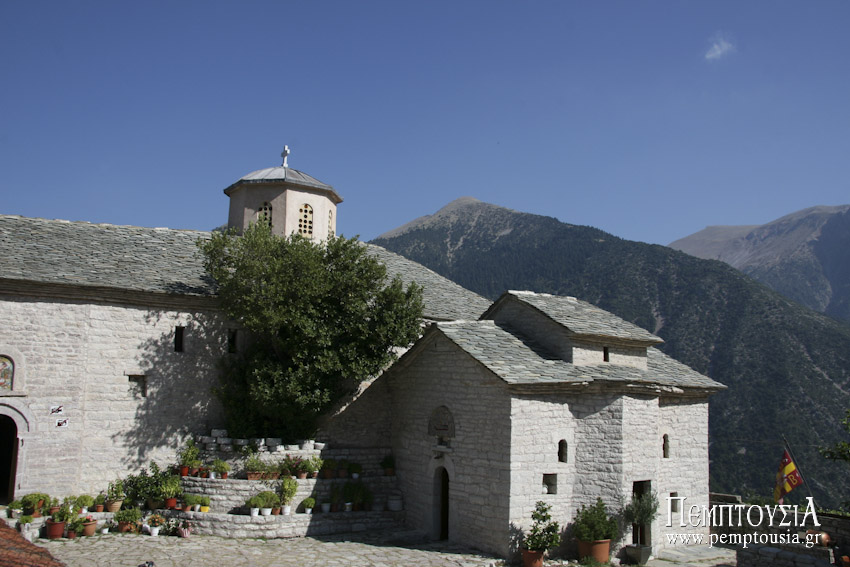
The Monastery’s feast is 15 August, the Dormition of the Mother of God, and it also celebrates on the Friday of Bright Week, the Life-Receiving Spring. Throughout the year, but particularly in the summer months, a host of pilgrims visit, from all over Greece, to kiss the wonder-working icon of Our Lady the Guide, which, according to tradition, is a work by Saint Luke the Evangelist
